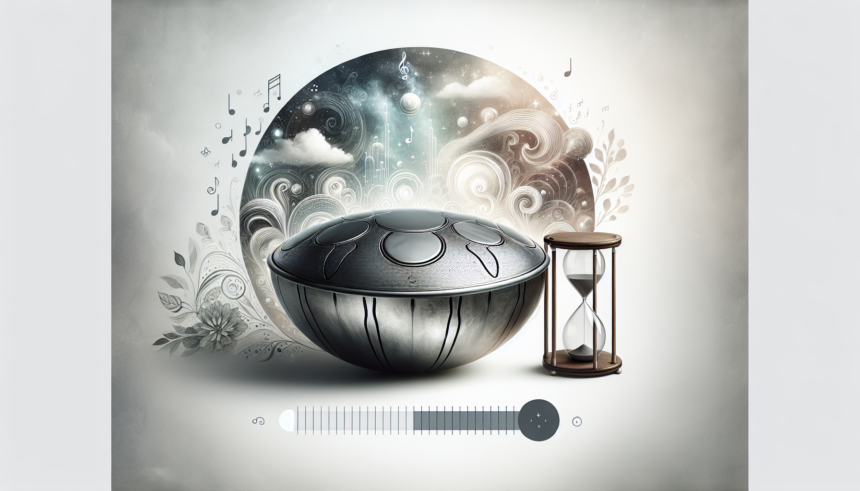The handpan is a fairly young instrument in the world of music, having been created only in the year 2000. Despite its nascence, it has quickly garnered widespread admiration for its ethereal sound and unique design. A handpan, made of steel, is a substantial investment for musicians and enthusiasts alike. Thus, taking care of it to ensure its longevity and maintaining its superior sound quality is of utmost importance. One critical aspect that influences both the longevity and the sound quality of a handpan is humidity. This article explores the role of humidity in the longevity and acoustic properties of a handpan. We will delve into how various humidity levels affect the instrument and provide some best practices to protect your handpan.
The Anatomy of a Handpan
Before diving into the details of humidity effects, it is beneficial to understand the basic anatomy of a handpan. A handpan consists of two hemispherical shells, typically crafted from nitrided steel, glued together. The top shell has a central note or ‘ding’ surrounded by a circle of tone fields, while the bottom shell includes a hole to balance pressure and sound dynamics. The steel in handpans is nitrided to provide a protective layer against rust. However, steel remains susceptible to environmental changes, especially humidity.
Understanding Humidity
Humidity is the concentration of water vapor present in the air. It is expressed as a percentage and has a significant impact on various materials, including metal. Rusting, for example, is a common consequence of high humidity on steel objects. Conversely, very low humidity can also be detrimental, potentially leading to brittleness in some materials. For a handpan, maintaining an optimal humidity level is crucial to avoid both rust and physical or acoustical damage.
Impact of High Humidity on Handpans
Rust and Corrosion
The most obvious and well-known issue with high humidity is rust. When steel is exposed to moisture for prolonged periods, it undergoes oxidation. The nitriding process on handpans adds a layer of protection, but it is not foolproof. Continuous exposure to a highly humid environment accelerates the rate of oxidation, leading the handpan to rust. Rust not only diminishes the aesthetic appeal of the instrument but also compromises its structural integrity.
Sound Quality Degradation
Rust formation can lead to uneven surfaces on the tone fields of the handpan. These inconsistencies disrupt the precise tuning of the instrument, adversely affecting its sound quality. The handpan relies on exact tuning to produce its distinctive harmonic tones. Any changes in the surface texture, due to rust or corrosion, can lead to unwanted overtones and a loss of sonic clarity.
Impact of Low Humidity on Handpans
Structural Issues
While high humidity is a more obvious concern, extremely low humidity can also be harmful. Handpans consist of metal, which can contract in low-humidity conditions. Over time, this contraction and expansion with varying humidity levels can cause minute structural changes that may lead to cracks or other forms of physical damage.
Impact on Playability
Very low humidity can make the material more brittle. Although less common, metals can lose some degree of flexibility, affecting how the notes respond when played. This change might not be visible to the naked eye, but seasoned players might notice a difference in the instrument’s responsiveness and overall feel.
Optimal Humidity for Handpans
Given the negative impacts of both high and low humidity, maintaining an optimal humidity level is essential. Experts generally recommend keeping the relative humidity (RH) around 40-60%. This range is considered safe for a handpan, ensuring minimal risk of rust or structural issues.
Tools to Monitor and Maintain Humidity
Investing in a hygrometer can assist in monitoring the humidity levels around your handpan. A hygrometer provides real-time data, allowing you to make necessary adjustments. For environments where humidity levels disproportionately high or low, consider using dehumidifiers or humidifiers to stabilize the humidity. Storing your handpan in a climate-controlled room is an ideal solution to maintain consistent humidity levels.
Best Practices for Handpan Care
Regular Cleaning
Maintaining a regular cleaning routine can help to prevent rust and corrosion. A dry, soft cloth can be used to wipe down the handpan after each use. Additionally, consider using specialized handpan oils to add an extra layer of protection.
Proper Storage
Always store your handpan in a climate-controlled environment when not in use. Using a handpan case provides both physical protection and helps to control humidity exposure. For those living in areas with extreme humidity levels, silica gel packets inside the case can absorb excess moisture.
Avoiding Direct Sunlight
Direct sunlight can not only heat the instrument but also affect humidity levels. Prolonged exposure to sunlight may lead to expansion and contraction cycles that might damage the handpan over time.
Travel Considerations
If your handpan travels with you to various environments, consider investing in protective equipment designed for travel. Insulated bags or cases can provide a buffer against rapid humidity changes. Be cautious about exposing the handpan to extremely humid or dry conditions for prolonged periods.
Conclusion
Humidity plays a crucial role in the longevity and sound quality of a handpan. Understanding the effects of both high and low humidity on the instrument allows for better maintenance and care routines. By maintaining an optimal humidity level, you can ensure that your handpan remains in excellent condition, providing beautiful, ethereal sounds for years to come. Whether you are an avid player or a casual enthusiast, taking proactive measures to protect your handpan from humidity-related issues is an investment in the longevity and quality of your musical instrument.
FAQs
1. Can a handpan be played in any climate?
While a handpan can technically be played in various climates, it is essential to consider the effects of humidity and temperature. High humidity can lead to rust, while very low humidity can make the metal brittle. Always try to maintain an optimal humidity level of 40-60% to ensure the best longevity and sound quality.
2. How often should I oil my handpan?
The frequency of oiling your handpan will depend on the climate and how often you play it. In general, it is recommended to oil your handpan every few weeks. If you live in a very humid environment, more frequent oiling may be necessary to provide an extra layer of protection against rust.
3. What type of oil should I use for cleaning my handpan?
Specialized handpan oils are available that are formulated to protect the steel while being safe for the instrument. If you don’t have access to specialized oils, coconut oil or mineral oil can be used as a temporary measure, though they may not offer the same level of protection as handpan-specific products.
4. Is it okay to leave my handpan in the car?
Leaving your handpan in the car for extended periods is not advisable due to the rapid changes in temperature and humidity. Cars can become extremely hot or cold, which will affect the metal and potentially lead to structural and acoustic issues.
5. What should I do if my handpan starts to show signs of rust?
If you notice signs of rust on your handpan, address it immediately. Use a fine abrasive pad to gently remove the rust and clean the area thoroughly. After cleaning, oil the surface to add a protective layer. Frequent checks and maintenance can prevent small rust spots from becoming significant problems.





